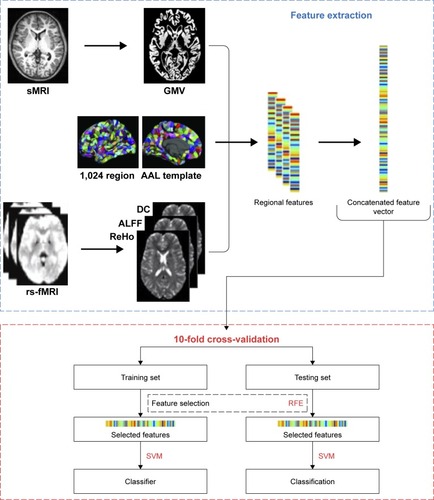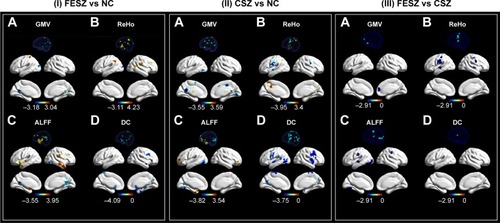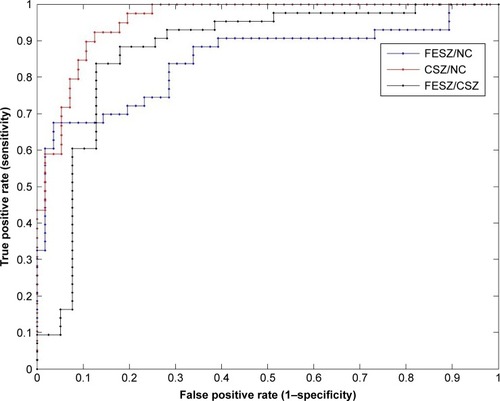Figures & data
Figure 1 Flow diagram of the classification approach employed in this study.
Abbreviations: AAL, automated anatomical labeling; ALFF, amplitude of low-frequency fluctuation; DC, degree centrality; GMV, gray matter volume; rs-fMRI, resting-state functional magnetic resonance imaging; RFE, recursive feature elimination; ReHo, regional homogeneity; sMRI, structural magnetic resonance imaging; SVM, support vector machine.

Table 1 Demographic and clinical characteristics
Figure 2 Between-group differences in the regional GMV (A), ReHo (B), ALFF (C), and DC (D).
Abbreviations: ALFF, amplitude of low-frequency fluctuation; CSZ, chronic schizophrenia; DC, degree centrality; FESZ, first-episode drug-naive schizophrenia; GMV, gray matter volume; NC, normal control; ReHo, regional homogeneity.

Table 2 Classification performances
Figure 3 Classification results.
Abbreviations: CSZ, chronic schizophrenia; FESZ, first-episode drug-naive schizophrenia; NC, normal control; ROC, receiver operating characteristic.

Table S1 Significant differences in GMV among three groups
Table S2 Significant differences in ReHo among three groups
Table S3 Significant differences in ALFF among three groups
Table S4 Significant differences in DC among three groups
